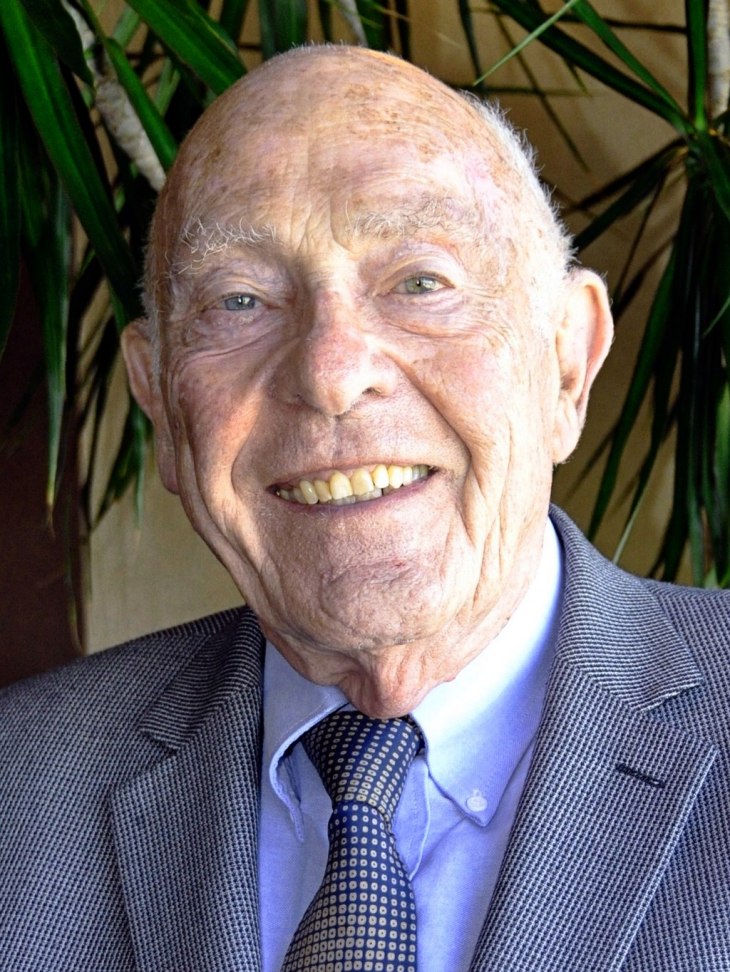Experimental tribute to solid-state pioneer John W. Cahn
Materials researchers at Helmholtz-Zentrum Geesthacht have experimentally validated the Larché–Cahn formula for the first time
Most materials scientists will know the name from their studies: John W. Cahn, famous physical chemist and pioneer of materials research. Thanks to his at-times revolutionary theories and research, our understanding of metals and other materials has substantially improved. In particular, Cahn focussed on the thermodynamic description of phase phenomena in liquids and solids. In the 1960s, he and his PhD student Francis Larché developed a thermodynamic theory of solids under tension. Now, materials researchers at the Helmholtz Centre Geesthacht (HZG) have proven a central aspect of this very theory for the first time in an experiment. No other researchers before had succeeded in doing so. Their results were recently published in the journal Proceedings of the National Academy of Sciences (PNAS).
![Nanoporous palladium. Scanning electron microscope image. [Photo: Shan Shi] Nanoporous palladium](/imperia/md/images/hzg/presse/pressemitteilungen/2018/fittosize__730_0_fc3d11b5225d83edb877d4a1449a0ea5_palladium_pnas.jpg)
Nanoporous palladium. Scanning electron microscope image. [Photo: Shan Shi]
“We carried out our experiments with some reverence. After all, John W. Cahn was perhaps the most significant personality in materials research,” explains Dr Jürgen Markmann, a physicist at the HZG Institute for Materials Research. “The fact that we were able to prove his theory with actual experiments fills our team with a certain pride.”

John W. Cahn [Photo: © inamori Foundation, 2011]
The experiment is in excellent agreement with the theory and confirms a central prediction of 20th century thermodynamics. It concerns the elastic moduli of metals in which one type of atom can move freely in the crystal lattice under applied stress.
This process is extremely slow in macroscopic bodies due to the long distances involved and is therefore not actually measurable. It can, however, be calculated thanks to the Larché–Cahn formula. Jürgen Markmann tells us: “We have managed to get hydrogen atoms in nanoporous palladium samples with extremely short transport routes to behave as predicted by the Larché–Cahn theory and have been able to measure this.”
Hydrogen atoms move through palladium network
![A simplified representation of the experiment using the example of a wire bending: If the wire is bent, the atoms behave as follows: In the lower part they are compressed and at the top there is more space. The smaller hydrogen atoms slide upwards, pushing the palladium atoms further apart. [Picture: Jürgen Markmann] A simplified representation of the experiment using the example of wire bending](/imperia/md/images/hzg/presse/pressemitteilungen/2018/fittosize__730_0_df6edea0cab286242f6b4825ec99e1e1_drahtbiegung_v4.png)
A simplified representation of the experiment using the example of a wire bending: If the wire is bent, the atoms behave as follows: In the lower part they are compressed and at the top there is more space. The smaller hydrogen atoms slide upwards, pushing the palladium atoms further apart. [Picture: Jürgen Markmann]
The experimental evidence can be well-explained by the following example: if one bends a solid body made of a metal alloy, the atoms in the lower region of the body will be squashed together, which creates more space in the upper region. The small hydrogen atoms slide upwards, pushing the palladium atoms there further apart.
Jürgen Markmann explains: “The elastic modulus could be understood theoretically, but in practice the change is not detectable in most alloys because this restructuring at the atomic level is much too slow. Only in our nanoporous palladium alloys are the necessary paths for hydrogen migration short enough and the effect on the elastic modulus measurable.”
Eine vereinfachte Darstellung des Experiments am Beispiel der Drahtbiegung: Biegt man den Draht, dann verhalten sich die Atome wie folgt: Im unteren Bereich werden diese zusammengedrückt und oben ergibt sich dadurch etwas mehr Platz. Die kleineren Wasserstoff-Atome rutschen nach oben, drücken dort die Palladium-Atome weiter auseinander. [Bild: Jürgen Markmann]
The HZG materials researchers are experts in producing porous nanomaterials from metals. The metal particles are barely twenty nanometres in diameter. For comparison, one nanometre is one millionth of a millimetre. Several billion of these palladium nanoparticles are joined to form a porous network. These are made into millimetre-sized cylindrical samples. The sample is immersed in acid solution, and the phase phenomena can be investigated with an applied electrical voltage.
Unfortunately, John W. Cahn himself will not hear about the results of these experiments. In 2016, the pioneer of materials research, professor of metallurgy at the Massachusetts Institute of Technology and the National Institute of Standards and Technology and recipient of the Kyoto Prize, among others, passed away in Seattle at the age of 88.
Palladium, with the atomic number 46, is a rare transition metal and belongs to the platinoid group. As a catalyst, the element accelerates reactions, particularly those that involve the addition or removal of hydrogen.
Further information:
Contac:

Helmholtz-Zentrum Geesthacht
Max-Planck-Str.1
21502 Geesthacht
